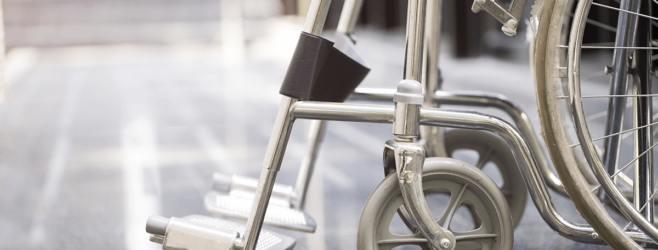While adaptive equipment is often vital to children and adults with cerebral palsy, this specialized type of equipment comes with a high price tag. To this end, it can be an ideal target for thieves who know its value. Stolen equipment can leave cerebral palsy patients with no options, so it is crucial to stay alert to prevent theft.
Importance of Adaptive Equipment for Cerebral Palsy
People with cerebral palsy can face significant challenges in life. Depending on how severe the condition is, patients may require lifelong care.
Since cerebral palsy affects different parts of the body, its symptoms can differ from person to person.
Adaptive equipment for cerebral palsy is central to improving life quality and comfort levels for many patients. Cerebral palsy adaptive equipment includes any device that helps the patient move.
Some common types of adaptive equipment include:
- Wheelchairs
- Strollers
- Walkers
- Braces
- Orthotic boots
- Brachiation kits
- Car seats
Because adaptive equipment for cerebral palsy is expensive, it is often the target of criminals who plan to sell it. Others may wish to steal the equipment as a cruel practical joke, which occurred in New York City when an $8,000 wheelchair was stolen and later found in nearby bushes.
Having personal belongings stolen always feels like a violation. However, when adaptive equipment for cerebral palsy is stolen, it can be life-altering in a very cruel way.
Adaptive equipment gives people independence. Without it, they simply cannot get around. A crime victim named George Layton who had his wheelchair stolen in Southern California describes it as:
“When you take a person’s mobility like a wheelchair, crutches, or a person that’s blind and you take their cane, it’s like stealing a member or kidnapping a member of the family.”
How to Prevent Cerebral Palsy Adaptive Equipment Theft
Theft can be prevented with careful monitoring of cerebral palsy adaptive equipment.
Leaving equipment unattended is the easiest way to have it stolen, so it is important to keep a very close watch on adaptive equipment.
Bring Adaptive Equipment Inside
Although it can be more convenient to leave adaptive equipment outside, especially when indoor space is tight, it is important to bring the equipment inside.
Wheelchairs and other devices that are left on a porch or in a car can be easy targets for thieves.
These examples show how common adaptive equipment theft is:
- In December 2018, a 4-year-old girl with cerebral palsy had her $10,000 wheelchair stolen from her parents’ car by two thieves in Los Angeles.
- In June 2019, a 15-year-old boy with cerebral palsy had his wheelchair ramps stolen in Philadelphia, leaving him unable to get in and out of his house.
- In October 2019, a 7-year old boy in California had his wheelchair stolen but it was thankfully found. His mother said:
“His wheelchair is everything. He can’t go to lunch at school without his wheelchair, because that’s the way he moves.”
Lock All Doors and Windows
It is important for those responsible for adaptive equipment to lock all doors and windows.
Even in places considered safe, it is possible that burglars will watch for opportunities to steal expensive equipment. By locking doors and windows in houses and vehicles, theft may be prevented.
In a case in Kentucky, the specialized car seat and stroller of a 4-year-old boy with cerebral palsy were both stolen from an unlocked car with the keys still in it. The fact that the car was not stolen but the equipment was shows how valuable adaptive equipment for children with cerebral palsy can be.
Other Methods to Prevent Theft
As these unfortunate examples demonstrate, adaptive equipment can be an easy and valuable target for thieves. Since stolen equipment can severely impact the lives of people living with cerebral palsy, it is important to stay vigilant.
Some additional steps that families may take include:
- Making security improvements to homes, such as installing deadbolts on all entry points
- Keeping expensive equipment out of sight
- Not telling people when you are away or out of town
- Talking to your children about home security
- Keeping detailed descriptions and values for each piece of adaptive equipment you have
What to Do if Your Cerebral Palsy Adaptive Equipment Is Stolen
If your cerebral palsy adaptive equipment is stolen, call the police immediately. Provide as much detail as you can so that the police and bystanders can attempt to locate the items.
If the stolen items are not found, consider sharing your story on a GoFundMe page with donation requests to replace them.
There are also cerebral palsy organizations that may be able to help or offer guidance, such as the United Cerebral Palsy Association.
Avoid Theft of Adaptive Equipment for Cerebral Palsy
Adaptive equipment for cerebral palsy is expensive and can be the target of thieves who know its value and wait for opportunities to steal. No matter how safe families feel, they should always take precautions.
If adaptive equipment for cerebral palsy is stolen, contact the police without delay. There have been instances in which stolen equipment was found — but if it is not, there is help for families in need.



